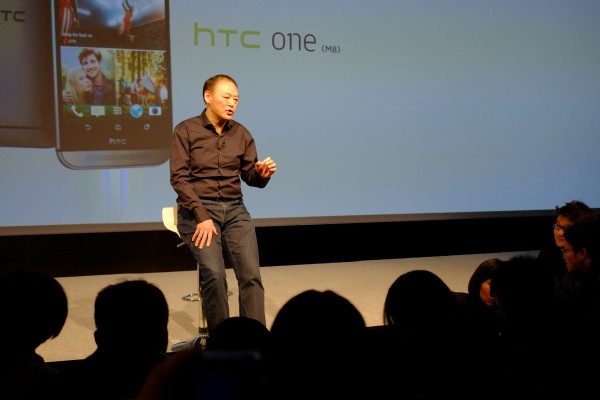The new phone may have the same name as last year, but in the HTC One unveiled yesterday, the Taiwanese phone maker is looking to succeed where it has not done so 12 months ago.
With a revamped camera and bigger screen, the new One has already won plaudits in early reviews, but this time, the company wants to go further than the previous flagship, which was also well received but did not impress enough users, especially those who went with Samsung or Apple.
Unlike before, HTC has made every effort to keep the phone from launching until the company was totally satisfied, said chief executive officer Peter Chou.
Success for the new One phone hinges on how well it differentiates from the competition, he told reporters at a launch event in New York, as the company attempts to build up its brand name in both established markets like the United States and Europe as well as emerging ones such as India and China.
Going by how it has shown off the One’s design and interface, it’s clear HTC has tried to move away from an obsession with hardware specification. Instead, it looks set to address the practical needs of the consumers such as information gathering and consumption.
Innovation is also part of the strategy. Hence, the introduction of the unique dual camera system which lets you take the snapshots first then worry about where to focus the shot through post production later.
HTC also hopes that consumers will embrace its new idea of simplicity and uncluttered design, as shown in the new One’s smooth, metallic design.
It is also working closely with accessory producers so that the product is well supported at launch. Brands such as Otter and *Speck were featured during the press conference here, showing how important it was to have an ecosystem around a new phone, as Apple has always done.
When the One phone ships worldwide from April, you can also expect the company’s own unique Dot-View cover that shows information such as time, weather and even calls, without troubling you to even flip the cover.
HTC’s plan for the future is to grow its market share to 8 to 10 per cent in all markets, up from its current 5 per cent, which is still far below the 31 per cent for Samsung and 16 per cent for Apple, according to research firm Gartner.
In doing so, HTC will be selective in choosing the right product range for each individual market with the focus on being as competitive as possible, said Chou.
Questioned about plans for the tablet market or wearables such as smartwatches, he would only say that they were part of the plan, without divulging any more details.
Can the new HTC One turn the company’s fortunes around? Certainly, it can, by relying on its uniqueness and design to entice customers. It really is a beautiful piece of equipment (see our hands-on impressions).
That being said, the smartphone market demand is still partly driven by a focus on hardware specs. HTC wants to sell a better unique experience – much like Apple – but that may take time, perhaps only when the successor to this year’s flagship is unveiled in future.






Tried it, loved it. You HAVE to hold it and get a sense of the phone. It’s difficult to explain what a difference build quality means unless you experience the product. I use an iPhone 5S and if there’s one thing I could change, it would be the sharp edges. The One M8 fits perfectly in your hand.
For those of you in Singapore, it’s available tomorrow, 5th April at all major telcos for S$998 without contract. Oh yea!
Tried it, loved it. You HAVE to hold it and get a sense of the phone. It’s difficult to explain what a difference build quality means unless you experience the product. I use an iPhone 5S and if there’s one thing I could change, it would be the sharp edges. The One M8 fits perfectly in your hand.
For those of you in Singapore, it’s available tomorrow, 5th April at all major telcos for S$998 without contract. Oh yea!
dot-view yessir
dot-view yessir